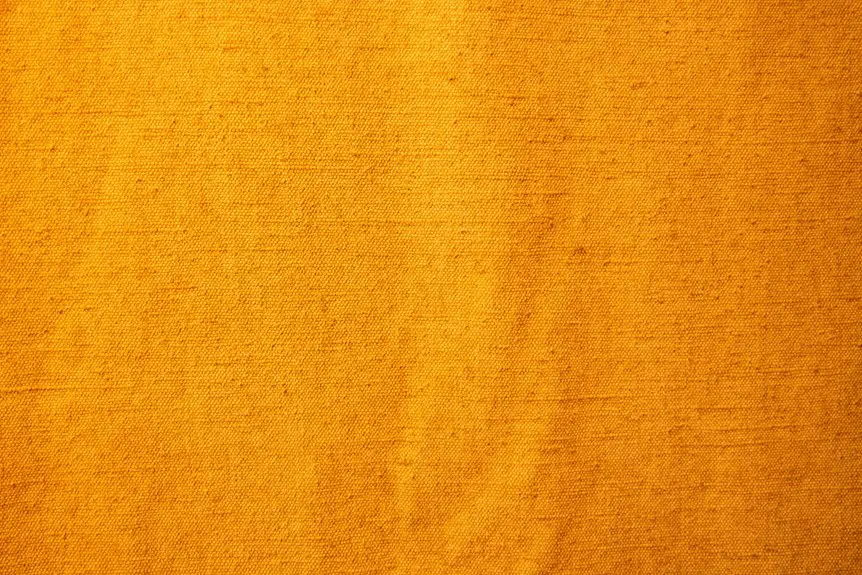Did you know linen can absorb up to 20% of its weight in moisture without feeling damp? When you wear linen, you benefit from the unique properties of its fibers and weave that keep you cool and dry. Understanding how flax fibers channel airflow and how the fabric’s structure affects breathability might change the way you think about summer clothing. Let’s explore what makes linen stand out in warm weather.
Table of Contents
Key Takeaways
- Flax fibers in linen are hollow and aligned to facilitate natural air circulation and prevent heat or moisture buildup.
- Linen’s loose weave creates tiny gaps that allow continuous airflow and quick escape of warm, moist air.
- The fabric’s high heat conductivity rapidly transfers body heat away, enhancing cooling and comfort.
- Linen efficiently wicks moisture from the skin and dries quickly, avoiding sticky or clammy sensations.
- Compared to cotton and silk, linen’s thicker fibers and structure provide superior breathability and moisture management.
The Unique Structure of Flax Fibers
Flax fibers have a distinctive structure that makes linen so breathable. When you examine the flax plant, you’ll notice its fibers are long, smooth, and hollow.
These fiber properties create natural channels that allow air to flow freely through linen fabric. Unlike cotton or synthetic fibers, flax fibers don’t trap heat or moisture, so you stay cooler and more comfortable.
The way the fibers align and their inherent stiffness also improve airflow by preventing the fabric from clinging to your skin. Because the flax plant’s fibers have a unique cell structure, linen lets your body breathe, even in hot weather.
Understanding these fiber properties helps you appreciate why linen is an ideal choice for breathable clothing and home textiles.
How Linen’s Moisture-Wicking Enhances Comfort
Because linen naturally pulls moisture away from your skin, it keeps you feeling dry and comfortable throughout the day.
This moisture absorption happens quickly as linen fibers draw sweat and humidity from skin contact, allowing the fabric to dry fast. Unlike synthetic materials that trap moisture, linen’s ability to wick it away means you avoid that sticky, clammy feeling.
When you wear linen, you’re less likely to experience irritation or overheating because the fabric manages moisture efficiently. This quality makes linen ideal for warm climates or active days, ensuring your skin stays cool and dry.
The Role of Linen’s Loose Weave in Airflow
A key factor that makes linen so breathable is its loose weave, which lets air flow freely through the fabric. When you wear linen, the loose fabric structure improves airflow dynamics by creating tiny gaps between threads.
These gaps allow warm air and moisture from your skin to escape quickly, preventing that sticky, overheated feeling. Unlike tightly woven fabrics, linen’s open construction enhances ventilation without sacrificing durability.
This means you stay cooler and more comfortable in hot weather. The way the fibers are interlaced encourages continuous air circulation, so your skin can breathe naturally.
Stay cooler and comfortable as linen’s fibers promote natural, continuous air circulation for breathable comfort.
When you choose linen, you’re benefiting from a fabric designed to optimize airflow, helping regulate your body temperature and keep you feeling fresh throughout the day.
Linen’s Heat Conductivity and Temperature Regulation
When you wear linen, you benefit from its excellent heat conductivity, which helps regulate your body temperature. Linen fibers transfer heat away from your skin quickly, enhancing heat transfer and promoting thermal comfort even in warm conditions. This natural ability prevents overheating and keeps you feeling fresh.
| Feature | Benefit |
|---|---|
| High heat transfer | Rapid cooling effect |
| Moisture wicking | Evaporative cooling |
| Loose weave | Increased airflow |
| Natural fibers | Breathable, hypoallergenic |
| Temperature regulation | Maintains thermal comfort |
Linen’s unique combination of fiber properties and weave structure makes it ideal for heat transfer, ensuring you stay comfortably cool throughout the day.
Comparing Linen’s Breathability to Other Fabrics
Although many fabrics claim to offer breathability, linen stands out due to its natural fiber structure and weave.
When you compare linen to cotton breathability, linen typically allows air to flow more freely, thanks to its thicker fibers and looser weave. This means you’ll stay cooler and feel less sweaty in hot weather.
In a silk comparison, silk feels smooth and luxurious but doesn’t breathe as well as linen. Silk traps more heat and moisture against your skin, which can leave you feeling warmer.
If you want fabric that efficiently manages moisture and airflow, linen outperforms many others.
Frequently Asked Questions
How Should Linen Be Cared for to Maintain Its Breathability?
You should follow proper linen maintenance by using gentle washing techniques like cold water and mild detergent. Avoid harsh chemicals and high heat drying to keep fibers intact, ensuring your linen stays breathable and comfortable over time.
Does Linen’s Breathability Change After Multiple Washes?
You’ll find linen’s breathability stays strong after multiple washes because proper linen washing preserves its fiber structure. Just avoid harsh detergents and high heat to keep the fibers open and airy, maintaining comfort over time.
Can Linen Cause Allergic Reactions or Skin Irritation?
You might experience skin sensitivity or linen allergies if you have sensitive skin. However, linen is generally hypoallergenic and gentle, so most people won’t have irritation from wearing or using linen products regularly.
Is Linen Suitable for All Seasons or Only Summer?
You’ll find linen great for year-round wear because of its seasonal versatility. It keeps you cool in summer and insulates moderately in cooler months, making it a smart choice beyond just hot weather.
How Does Linen’s Breathability Affect Its Durability Over Time?
Wonder how breathability benefits your linen’s durability factors? You’ll find that better airflow reduces moisture buildup, preventing fiber weakening. So, you can enjoy long-lasting linen without sacrificing comfort or strength over time.
- How to Sew a Simple Fabric Phone Case (Perfect for Beginners) - June 25, 2025
- DIY Fabric Laptop Case: Sew a Padded Sleeve in Under an Hour - June 25, 2025
- How to Make a Fabric Pencil Case With a Zipper: a Beginner’s Tutorial - June 25, 2025




